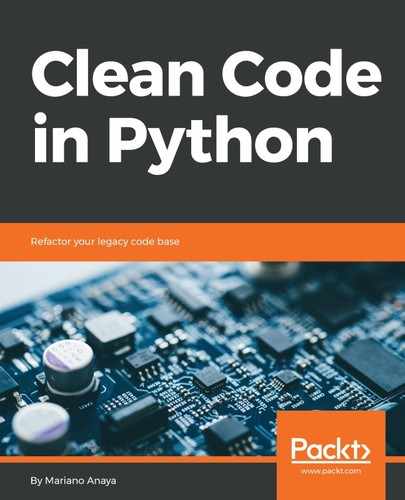This chapter is dedicated to architecture, so the term container refers to something completely different from a Python container (an object with a __contains__ method), explored in Chapter 2, Pythonic Code. A container is a process that runs in the operating system under a group with certain restrictions and isolation considerations. Concretely we refer to Docker containers, which allow managing applications (services or processes) as independent components.
Containers represent another way of delivering software. Creating Python packages taking into account the considerations in the previous section is more suitable for libraries, or frameworks, where the goal is to reuse code and take advantage of using a single place where specific logic is gathered.
In the case of containers, the objective will not be creating libraries but applications (most of the time). However, an application or platform does not necessarily mean an entire service. The idea of building containers is to create small components that represent a service with a small and clear purpose.
In this section, we will mention Docker when we talk about containers, and we will explore the basics of how to create Docker images and containers for Python projects. Keep in mind that this is not the only technology for launching applications into containers, and also that it's completely independent of Python.
A Docker container needs an image to run on, and this image is created from other base images. But the images we create can themselves serve as base images for other containers. We will want to do that in cases where there is a common base in our application that can be shared across many containers. A potential use would be creating a base image that installs a package (or many) in the way we described in the previous section, and also all of its dependencies, including those at the operating system level. As discussed in Chapter 9, Common Design Patterns, a package we create can depend not only on other Python libraries, but also on a particular platform (a specific operating system), and particular libraries preinstalled in that operating system, without which the package will simply not install and will fail.
Containers are a great portability tool for this. They can help us ensure that our application will have a canonical way of running, and it will also ease the development process a lot (reproducing scenarios across environments, replicating tests, on-boarding new team members, and so on).
As packages are the way we reuse code and unify criteria, containers represent the way we create the different services of the application. They meet the criteria behind the principle of separation of concerns (SoC) of the architecture. Each service is another kind of component that will encapsulate a set of functionalities independently of the rest of the application. These containers ought to be designed in such a way that they favor maintainability—if the responsibilities are clearly divided, a change in a service should not impact any other part of the application whatsoever.
We cover the basics of how to create a Docker container from a Python project in the next section.
